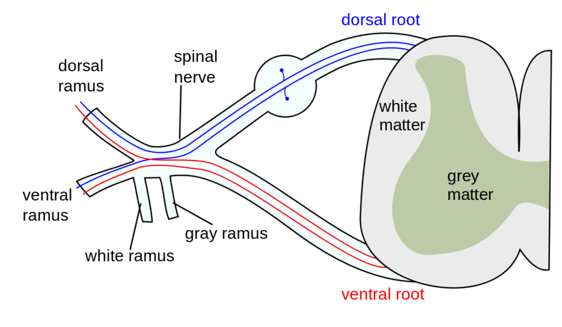Spine Anatomy
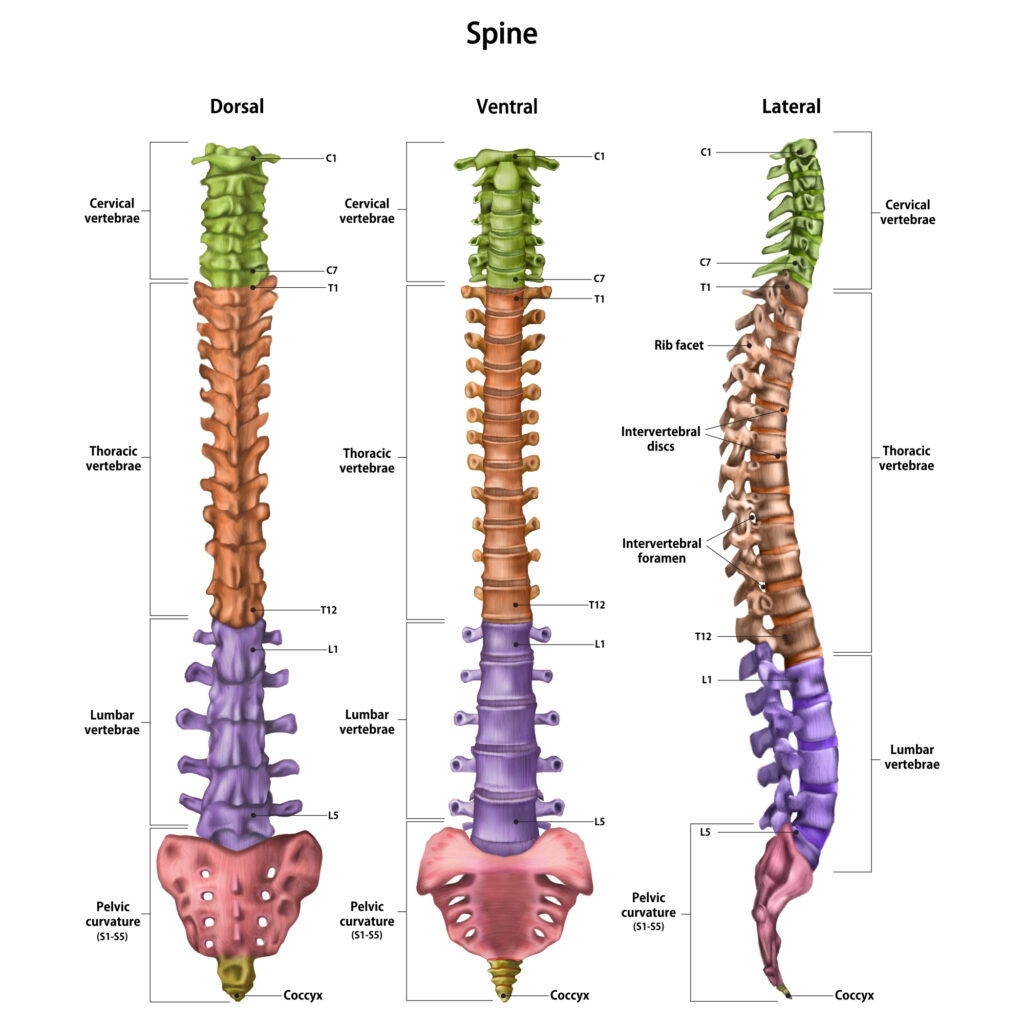
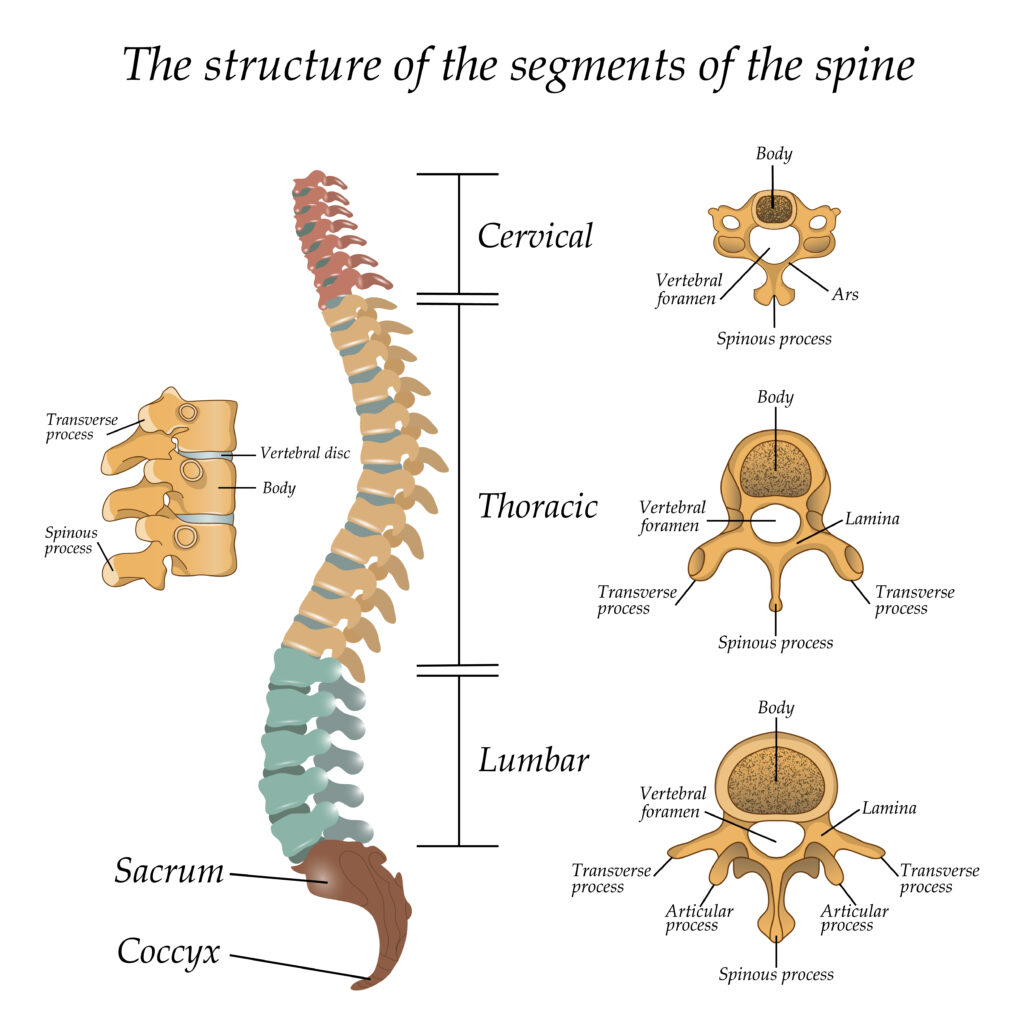
Introduction
The spinal cord is part of the central nervous system and consists of a tightly packed column of nerve tissue that extends downwards from the brainstem through the central column of the spine. It is a relatively small bundle of tissue (weighing 35 g and just about 1 cm in diameter) but is crucial in facilitating our daily activities.
The spinal cord carries nerve signals from the brain to other parts of the body (importantly the muscles we use to move) and receives sensory input from the body, partially processes it, and then transmits that information to the brain.
Along with its role in relaying motor and sensory signals between the brain and periphery, the spinal cord also provides separate neural circuits for many of our reflexes. Some reflexes eg the knee-jerk are built into the nervous system and bypass the brain, while others can be learned over time.
Spinal Canal
Formed by the vertebral foramina of the vertebral bodies the spinal canal [bound anteriorly by the vertebral bodies and posteriorly by the laminae (vertebral arches)] with reinforcement at the walls through the intervertebral disks and the anterior and posterior longitudinal ligaments. The diameter varies from 12 to 22 mm in the cervical region and from 22 to 25 mm in the lumbar region.
Contains:
- Spinal cord
- Meninges
- Blood vessels
- Spinal nerve roots and surrounding fatty and connective tissues.

Spinal Cord
The spinal cord is the major conduit and reflex centre between the peripheral nerves and the brain and transmits motor information from the brain to the muscles, tissues and organs, and sensory information from these areas back to the brain. It is, in an adult, approximately 45 cm long, cylindrical and slightly flattened anteriorly and posteriorly.
Its upper end is continuous with the medulla, the transition is defined to occur just above the level of exit of the first pair of cervical nerves.
Its tapering lower end, the conus medullaris, terminates at the level of the L3 vertebra in neonates, and at the level of the L1-2 intervertebral disk in adults. It then becomes the cauda equina.
Spinal Cord: External
Externally, the spinal cord is protected by 33 vertebrae, which sit between a semi-rigid intervertebral disc, which provide a level of flexibility to the vertebral column. Its flexibility is greatest in the cervical region and lowest in the thoracic region. The spinal cord (similar to the brain) is protected by three layers of meninges (membranes).
The spinal cord extends from the foramen magnum to the lowest border of the first lumbar vertebra. It is enlarged at two sites, the cervical and lumbar region.
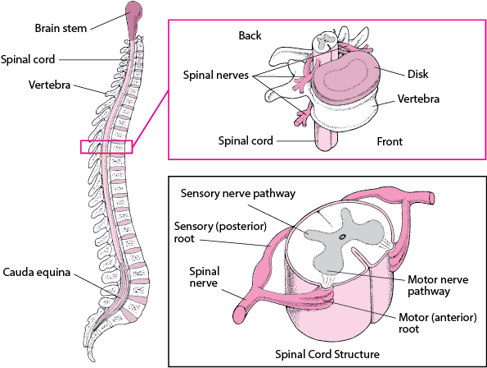
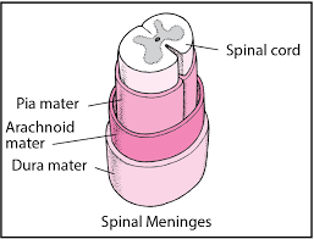
The vertebrae (in adults) are arranged in five regions, which provide support and protection for the spinal cord. It consists of seven cervical vertebrae, twelve thoracic vertebrae, five lumbar vertebrae, five sacral (fused in adults to form the sacrum) and four coccygeal vertebrae (fused to form the coccyx).

Spinal Cord: Internal
Inside, the spinal cord consists of grey matter and white matter.
The grey matter takes on the shape of a butterfly, with four ‘wings’ called horns: the horns in the front contain motor neurons; the horns in the back contain sensory neurons which carry sensory information.
The spinal cord grey matter is surrounded by a column of white matter, containing axons that allow different parts of the spinal cord to communicate smoothly, with signals passing upwards and downwards conveying eg sensation and motor signals.
Entry and exit:
- Sensory nerve fibres enter the spinal cord via the posterior (dorsal) root. The cell bodies for these neurons are situated in the dorsal root ganglia.
- Motor and Preganglionic Autonomic Fibres exit via the Anterior (Ventral) Root.
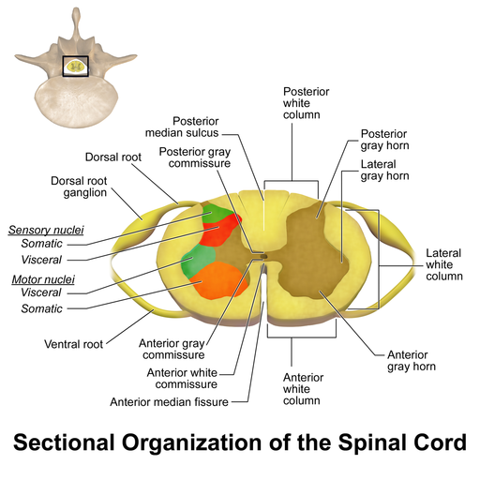
The Cauda Equina
Is the name given to the roots of the spinal nerves that extend beyond the termination of the spinal cord at the first lumbar vertebra in the form of a bundle of filaments within the spinal canal resembling a horse’s tail.
Has approximately 10 fiber pairs at its base: 3 to 5 lumbar fiber pairs; 5 sacral fiber pairs, and 1 coccygeal nerve.
Primary function of the cauda equina is to send and receive messages between the lower limbs and the pelvic organs, which consist of the bladder, the rectum, and the internal genital organs.
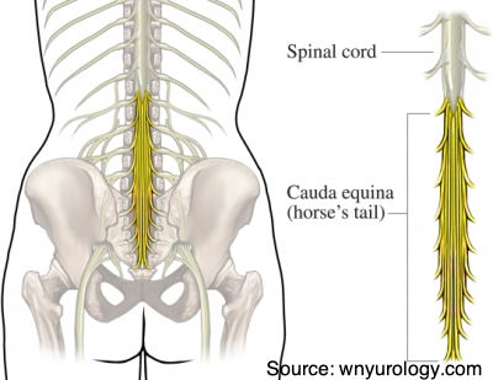
Spinal Nerves
The term spinal nerve generally refers to a mixed spinal nerve that carries motor, sensory, and autonomic signals between the spinal cord and the body.
Humans have 31 left–right pairs of spinal nerves, each roughly corresponding to a segment of the vertebral column. There are eight cervical*, twelve thoracic, five lumbar, five sacral and one coccygeal.
The spinal nerves are relatively large nerves that are formed by the merging of two nerve roots: a sensory nerve root and a motor nerve root.
